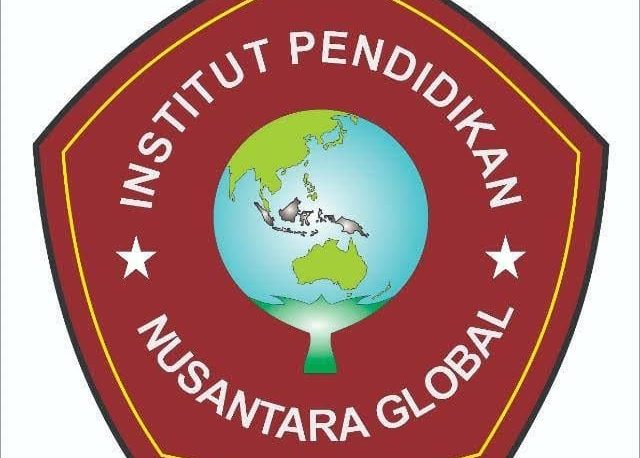RUANG TANPA KENDALI: MOBILITAS MAKASSAR DALAM KRISIS
DOI:
https://doi.org/10.62567/ijosse.v1i3.1201Keywords:
urban mobility, spatial politics, Makassar, infrastructure crisis, everyday resistance, urban anthropologyAbstract
Makassar is currently facing a mobility crisis that is not merely technical, but deeply embedded in the social, political, and spatial dimensions of urban life. Mobility spaces in the city—roads, transport nodes, and travel rhythms—have become contested arenas where technocratic planning collides with residents’ everyday realities. This study aims to examine how mobility spaces in Makassar are produced, negotiated, and lived by urban dwellers amid infrastructural dysfunction and unequal access.
Using a qualitative, city-based ethnographic approach, the research was conducted across key mobility corridors and densely populated neighborhoods. Conceptually, this study draws on the frameworks of spatial anarchy (Castells & Smith), temporal disorientation (Zerubavel), and the politics of infrastructure (Larkin) to analyze how disorganized space and time shape citizens’ mobility experiences.
Findings reveal that Makassar’s mobility space is marked by spatial fragmentation, erratic urban rhythms, and various forms of micro-resistance—such as the use of informal routes, modifications to pete-pete (minibus) trajectories, and the occupation of street space by informal economic activities.
This research contributes theoretically to urban anthropology and the discourse on mobility justice by foregrounding the need to understand cities from below—through the lived experiences of residents who continuously adapt within unruly and unstable urban environments
Downloads
References
Agrawaal, T. S., Sabie, S., & Soden, R. (2024). Moving Towards Mobility Justice: Challenges and Considerations for Supporting Advocacy. Proceedings of the ACM on Human-Computer Interaction, 8(CSCW1), 1–22. https://doi.org/10.1145/3637373
Akil, A., Yudono, A., Wahyuni, S., Ramadhani, R., & Kamaruddin, I. (2020). Relationship between Regional Development Level and Accessibility Index in Makassar Coastal Area. IOP Conference Series: Materials Science and Engineering, 875(1), 012013. https://doi.org/10.1088/1757-899X/875/1/012013
Allert, V., & Reese, G. (2025). On the challenges of civic engagement in the mobility transition - A conceptual analysis of the linkages between car dependence and collective action. Journal of Cleaner Production, 486, 144533. https://doi.org/10.1016/j.jclepro.2024.144533
Beyazit, E., & Canitez, F. (2023). Sustainable Urban Mobility Governance: Rethinking the Links Through Movement, Representation and Practice for a Just Transport System (pp. 311–327). https://doi.org/10.1007/978-981-99-2695-4_18
Bowles, B. O. (2022). Resilience, infrastructure and the anti-social contract in neoliberal Britain. Critique of Anthropology, 42(3), 270–285. https://doi.org/10.1177/0308275X221120171
Bräuchler, B. (2017). Changing patterns of mobility, citizenship and conflict in Indonesia. Social Identities, 23(4), 446–461. https://doi.org/10.1080/13504630.2017.1281468
Byiers, B. (2019). Single-Case Designs. In Handbook of Research Methods in Health Social Sciences (pp. 581–602). Springer Singapore. https://doi.org/10.1007/978-981-10-5251-4_92
Cho, J. B., Mansury, Y. S., & Ye, X. (2016). Churning, power laws, and inequality in a spatial agent-based model of social networks. The Annals of Regional Science, 57(2–3), 275–307. https://doi.org/10.1007/s00168-016-0791-4
Chung, H. (2013). The Spatial Dimension of Negotiated Power Relations and Social Justice in the Redevelopment of Villages-in-the-City in China. Environment and Planning A: Economy and Space, 45(10), 2459–2476. https://doi.org/10.1068/a45416
Colleoni, M. (2013). Mobility, Accessibility and Social Equity: A Comparative and Interdisciplinary Empirical Study in the Metropolitan Areas of Milan, Bologna and Turin. In Space–Time Design of the Public City (pp. 137–156). Springer Netherlands. https://doi.org/10.1007/978-94-007-6425-5_10
Dovey, K., & Recio, R. B. (2024). Inventraset assemblages: The spatial logic of informal street vending, transport and settlement. Urban Studies, 61(12), 2265–2289. https://doi.org/10.1177/00420980231223060
Doyle, A. (2016). Urban resilience: the regeneration of the Dublin Docklands. Proceedings of the Institution of Civil Engineers - Urban Design and Planning, 169(4), 175–184. https://doi.org/10.1680/jurdp.15.00038
Edison, E. A., Wunas, S., & M, Y. J. (2023). Mass Transit Route Network Planning in Makassar City. International Journal of Engineering Trends and Technology, 71(12), 69–77. https://doi.org/10.14445/22315381/IJETT-V71I12P208
El-Sherif, D. M. (2021). Urban mobility systems components. In Solving Urban Infrastructure Problems Using Smart City Technologies (pp. 89–106). Elsevier. https://doi.org/10.1016/B978-0-12-816816-5.00004-8
Falola, T., & Falola, B. (Eds.). (2017). The African Metropolis. Routledge. https://doi.org/10.4324/9781315157306
Ferguson, B. K. (2023). Symbolic meanings of ordinary city streets and their trees. Frontiers in Psychology, 13. https://doi.org/10.3389/fpsyg.2022.1080025
Gadepalli, R., Tiwari, G., & Bolia, N. (2020). Role of user’s socio-economic and travel characteristics in mode choice between city bus and informal transit services: Lessons from household surveys in Visakhapatnam, India. Journal of Transport Geography, 88, 102307. https://doi.org/10.1016/j.jtrangeo.2018.08.017
Hidayati, I., Yamu, C., & Tan, W. (2019). The Emergence of Mobility Inequality in Greater Jakarta, Indonesia: A Socio-Spatial Analysis of Path Dependencies in Transport–Land Use Policies. Sustainability, 11(18), 5115. https://doi.org/10.3390/su11185115
Jauregui-Fung, F., Kenworthy, J., Almaaroufi, S., Pulido-Castro, N., Pereira, S., & Golda-Pongratz, K. (2019). Anatomy of an Informal Transit City: Mobility Analysis of the Metropolitan Area of Lima. Urban Science, 3(3), 67. https://doi.org/10.3390/urbansci3030067
Kallenbach, T. (2020). Narratives of urban mobility in Germany: on the threshold of a departure from the car-centered city? Sustainability: Science, Practice and Policy, 16(1), 197–207. https://doi.org/10.1080/15487733.2020.1799625
Kuku, A. I., Ramli, M. I., & Rauf, S. (2022). Engineering and Traffic Management Study for the Operation of the Makassar Elevated Toll Road. IOP Conference Series: Earth and Environmental Science, 1117(1), 012074. https://doi.org/10.1088/1755-1315/1117/1/012074
Mara, F., Anselmi, C., Deri, F., & Cutini, V. (2024). The Spatial Roots of Urban Growth: Modelling Urban Dynamics with Space Syntax (pp. 61–76). https://doi.org/10.1007/978-3-031-65238-7_5
McDuie-Ra, D. (2021). Skateboard Video. Springer Singapore. https://doi.org/10.1007/978-981-16-5699-6
Meissonnier, J., & Jouve, N. (2015). Penser la mobilité dans une politique de rénovation urbaine. Cahiers de Géographie Du Québec, 58(163), 39–57. https://doi.org/10.7202/1028938ar
Mullenite, J. (2019). Infrastructure and Authoritarianism in the Land of Waters: A Genealogy of Flood Control in Guyana. Annals of the American Association of Geographers, 109(2), 502–510. https://doi.org/10.1080/24694452.2018.1490635
Ongolo-Zogo, V., & Epo, B. N. (2015). Sources of inequality in the cost of transport mobility in the city of Yaoundé, Cameroon. Development Southern Africa, 32(2), 229–239. https://doi.org/10.1080/0376835X.2014.984832
Rahim, M., & Abbas, I. (2024). The Development Characteristics of Makassar City in Past and Present. International Review for Spatial Planning and Sustainable Development, 12(2), 13. https://doi.org/10.14246/irspsd.12.2_238
Raux, C., Ma, T.-Y., & Cornelis, E. (2016). Variability in daily activity-travel patterns: the case of a one-week travel diary. European Transport Research Review, 8(4), 26. https://doi.org/10.1007/s12544-016-0213-9
Roque, A., Wutich, A., Brewis, A., Beresford, M., Landes, L., Morales-Pate, O., Lucero, R., Jepson, W., Tsai, Y., Hanemann, M., & Water Equity Consortium, A. for. (2024). Community-based Participant-observation (CBPO): A Participatory Method for Ethnographic Research. Field Methods, 36(1), 80–90. https://doi.org/10.1177/1525822X231198989
Roy, A. (2015). Urban Informality: The Production and Regulation of Space. In International Encyclopedia of the Social & Behavioral Sciences (pp. 818–822). Elsevier. https://doi.org/10.1016/B978-0-08-097086-8.74051-7
Sagaris, L. (2014). Citizen participation for sustainable transport: the case of “Living City” in Santiago, Chile (1997–2012). Journal of Transport Geography, 41, 74–83. https://doi.org/10.1016/j.jtrangeo.2014.08.011
Said, M., & Al Ani, M. Q. A. G. (2022). Bridging the gap in injustice urbanism. Acta Scientiarum Polonorum Administratio Locorum, 21(3), 435–446. https://doi.org/10.31648/aspal.7416
Saiz, A., & Wang, L. (2023). Physical geography and traffic delays: Evidence from a major coastal city. Environment and Planning B: Urban Analytics and City Science, 50(1), 218–243. https://doi.org/10.1177/23998083221108406
Sajjad, F., & Javed, U. (2022). Democracy, Legitimacy, and Mega‐Project Politics: The Evolution of Lahore’s First BRT Corridor. Antipode, 54(5), 1497–1518. https://doi.org/10.1111/anti.12829
Saraswati, Z. F., Pramudhita, N., Pradono, Wijayanti, G. M., & Sefianiz, D. (2021). Transportation Infrastructure Relations on Economic Growth in Sumatra Island. IOP Conference Series: Earth and Environmental Science, 830(1), 012099. https://doi.org/10.1088/1755-1315/830/1/012099
Scharloth, J. (2019). Stadt als Protestraum. Zeitschrift Für Germanistische Linguistik, 47(2), 337–354. https://doi.org/10.1515/zgl-2019-0015
Seibel, B. L., Serafim, R. S., Silva, N. S. da, Araújo, J. A. C., Springer, P. R., & Hollist, C. S. (2023). Implementation of Participatory Research in Vulnerable Context: Methodological Strategies and Challenges. Paidéia (Ribeirão Preto), 33. https://doi.org/10.1590/1982-4327e3333
Sheller. (2018). right to mobility.
Surya, B. (2015). The Dynamics of Spatial Structure and Spatial Pattern Changes at the Fringe Area of Makassar City. Indonesian Journal of Geography, 47(1), 11. https://doi.org/10.22146/ijg.6926
Surya, B., Syafri, S., Saleh, H., & Rasyidi, E. S. (2021). The Spatial Transformation and Sustainability of Development in the New City Areas of Metro Tanjung Bunga, Makassar City. Indonesian Journal of Geography, 53(3). https://doi.org/10.22146/ijg.50437
Svitková, K. (2018). Making a “Resilient Santiago”: Private Sector and Urban Governance in Chile. Czech Sociological Review, 54(6), 933–960. https://doi.org/10.13060/00380288.2018.54.6.436
Syadullah, M., & Setyawan, D. (2021). The Impact of Infrastructure Spending on Economic Growth: A Case Study of Indonesia. Communications - Scientific Letters of the University of Zilina, 23(3), A184–A192. https://doi.org/10.26552/com.C.2021.3.A184-A192
Vaughn, L. M. (2024). Participatory research methods. In Elgar Encyclopedia of Interdisciplinarity and Transdisciplinarity (pp. 370–373). Edward Elgar Publishing. https://doi.org/10.4337/9781035317967.ch81
Watson, S. (Ed.). (2019). Spatial Justice in the City. Routledge. https://doi.org/10.4324/9781351185790
Whitley, R. (2008). Social Capital and Public Health. In Social Capital and Health (pp. 95–115). Springer New York. https://doi.org/10.1007/978-0-387-71311-3_6
Wicki, M., Guidon, S., Bernauer, T., & Axhausen, K. (2019). Does variation in residents’ spatial mobility affect their preferences concerning local governance? Political Geography, 73, 138–157. https://doi.org/10.1016/j.polgeo.2019.05.002
Zahra, A. N., & Herlily, H. (2018). Reclaiming the Street for Pedestrians as a Sustainable City Approach. International Journal of Technology, 9(7), 1365. https://doi.org/10.14716/ijtech.v9i7.2521
Downloads
Published
How to Cite
Issue
Section
License
Copyright (c) 2025 Djufri Djufri

This work is licensed under a Creative Commons Attribution-ShareAlike 4.0 International License.
















